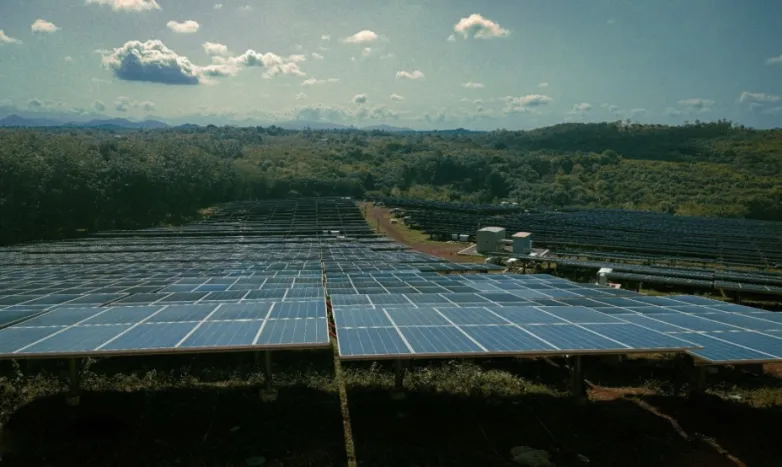Solar Site Selection: How to View Historical Satellite Images To Track Land Changes Over Time

Solar energy has become the cornerstone of successful adaptation to rapid climate change and environmental degradation. In the long term, the development of solar farms can be a key factor in achieving both economic efficiency and nature sustainability. Constructing effective solar infrastructure is a pretty complex project that requires not only technical planning but a precise environmental analysis.
The primary role in this process is played by satellites. They help to view historical satellite images to track land changes over time and determine how much solar irradiation can be captured, and what the patterns of floods and clouds in the region are. It also enables the estimation of how much solar power can be generated, allowing developers to avoid risks and plan more sustainably.
Why Land History Matters in Solar Development
Land history plays a direct role in determining whether a solar project can move forward and affects whether it is technically, financially, and legally feasible.
-
Technical Suitability: If the land has a history of flooding, landslides, or erosion, it might not be a safe place to build a solar farm. These issues can damage the panels or weaken their foundations. Even past dust storms or hail can be a red flag. They may not stop the project, but they could reduce panel efficiency and drive up maintenance costs.
-
Energy Production Potential: The weather history of a site tells you a lot about how much energy you can actually expect to generate. If satellite data shows frequent cloud cover or smoke from nearby wildfires, that means less sunlight reaches the panels, and less sunlight means lower energy output and a weaker return on investment.
-
Environmental Regulations: If the land was previously used for protected habitats, illegal logging, or mining, this can trigger environmental restrictions, delaying or even blocking permits.
-
Infrastructure Planning: Land history reveals whether the area has stable access to roads or power lines. Frequent land-use changes may indicate poor access or future land conflicts.
Using Satellite Imagery for Site Assessment
It’s no secret that the land changes constantly due to the realization of agricultural, infrastructure, and industrial projects. Even natural erosion or illegal logging can affect that. These changes can greatly impact the effectiveness of solar installations if they are not detected or managed correctly. For instance, a 2017 study by the National Renewable Energy Laboratory (NREL) found that solar panels installed before 2000 have required replacement due to various reasons, including exposure to a hot and humid climate. Moreover, extreme weather events, like hurricanes or severe hail, can damage solar panels.
Historical satellite images let us look back at weather patterns over the years, revealing risks you might not catch during a quick site visit. A piece of land that looks perfectly fine today may have dealt with flooding, hailstorms, or drainage problems in the past. These issues could affect the long-term stability of a solar installation. With this information, project teams can:
-
Choose regions that are less prone to seasonal waterlogging, flooding, or degraded soil
-
Detect contamination, illegal logging, or unregulated mining activities in the zone
-
Build a solid foundation for regulatory compliance, permitting, and documentation
Specialists and developers today are focusing on the ecovoltaic approach, trying to maximize energy production while minimizing environmental impact. Sometimes they succeed in even enhancing the local ecosystem. Ecovoltaic activists offer long-term sustainability and resilience of rural communities, reduce on-farm electricity costs, and increase potential cropping options with shade.
Developers also need to consider things like nearby plant and animal life, and how far the site is from power lines or substations. Even if a location gets plenty of sun, satellite image data might reveal long-term issues like poor access to the grid. In that case, it might not be the right choice. Careful planning helps build solar farms that are both efficient and environmentally sustainable.
Where to Access Historical Satellite Images
Now it’s time to discuss where to find these historical satellite images. Actually, access to this kind of data has become much easier thanks to a variety of open-access and commercial satellite platforms. For instance, various satellite programs maintained by NASA, the USGS, or the European Space Agency offer high-resolution satellite images that are useful for monitoring areas around the world and tracking the changes that have occurred over the last 40 years.
When choosing a solution to access historical satellite images, it’s vital to find one that offers an intuitive interface and easy-to-use tools. For instance, Google Earth Engine offers a simple interface and time-lapse tools that help visualize land transformation quickly. For more detailed or frequent updates, Other commercial providers, such as Planet and Maxar, offer detailed, frequent updates and high-resolution images suitable for advanced analysis.
Another valuable tool is EOSDA LandViewer, which combines historical and recent satellite data with vegetation indices and terrain analytics, ideal for solar site selection. These platforms enable developers to overlay historical satellite images of a location with environmental layers, creating a comprehensive profile that supports responsible solar planning.
A Smarter Way to Build Solar
Choosing the right location for a solar farm isn’t just about sunshine. It’s about knowing the land. With the help of historical satellite images, developers have a clearer picture of how a site has changed over time, where flood zones were, and what erosion patterns or past land use might be missed during the on-ground surveys. This kind of insight helps avoid costly surprises and prevents building in the wrong place. Since solar farms are meant to last for decades, understanding the land’s history is a smart way to protect the investment. By factoring in the past, we can build solar projects that perform better, last longer, and do less harm to the environment.
______________
Author :
Kateryna Sergieieva has a Ph.D. in information technologies and 15 years of experience in remote sensing. She is a scientist responsible for developing technologies for satellite monitoring and surface feature change detection. Kateryna is an author of over 60 scientific publications.
Also read
- Hyperparameter Tuning Good Practices for Robust Predictive Models
- 5 Critical Metal Forming Processes in Solar Panel Manufacturing
- Fast Prototyping Boosts Solar Efficiency and Sustainability
- Maximizing Efficiency with Low-Maintenance Solar Panel Systems
- Cyber Hygiene for Solar Companies: Protecting Your Data from Email Threats

